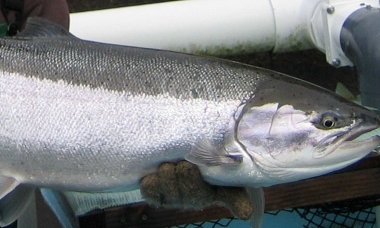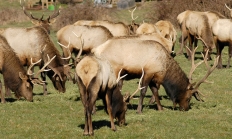
Search myodfw.com

After the shot, don ’t take your eyes off the turkey. Quickly and safely get to the downed bird to make sure it’s dead, or to take a second shot if it’s not. Turkeys are high-strung birds that can move quickly. A lot can happen between when you take a shot and when your bullet or arrow hits the bird that can lead to a wounded bird. You’ll want to be ready to take a second before the bird can run or fly away. Follow up for shotgun hunters When turkey hunting with a shotgun, keep the gun in a

When a turkey is shot in the head with a shotgun, death is usually instant. However, a turkey may flop on the ground for several seconds, even up to a minute, after it’s “dead.” In this case, the turkey isn’t going anywhere so simply wait for it to go still. If the bird is wounded and laying with its head up, you may need to shoot it again – in the head with a shotgun, or in the spine or vitals with an arrow. Don’t try to ring the neck of a bird that’s still alive but not going anywhere

Turkeys are some of the best tasting game birds we hunt. The key to eliminating any “gaminess” in the meat is to take proper care of it in the field. After your shot, you’ll want to field dress your bird as quickly as possible. The goal is to cool the bird down by removing its internal organs and allowing air to circulate in the body cavity. Gutting a turkey All you need to gut a turkey is a simple pocket knife. Cut through the thin skin of the stomach from the bottom of the breastbone to the anus. Keep your

Wild turkeys can be eaten either fresh or aged. It all comes down to personal preference, and there are adherents on both sides. Why and how to age a turkey Aging is a process by which changes in muscle enzymes tenderize the meat, and concentrate the flavor. Many hunters prefer to age their meat – both big game and game birds. Others adhere to the motto “fresh birds are the best birds.” Aging is particularly helpful in tenderizing the meat of older toms. If you choose to age your bird, here are some tips: Wild turkey can be aged right

When preparing your turkey for the pot, you can either skin it or pluck it. Because wild turkeys have such thin skin, many hunters prefer skinning their turkeys as it ’s must faster than plucking the bird. Pick up where you left off gutting the bird Simply continue making the cut in the skin from the body cavity, all the way up the breast bone to the base of the neck. The skin is thin enough that you often can peel it free from the breast meat. Slide your thumbs under the skin and working it up and away from

A visit to an ODFW is a chance to see fish -- from eggs to brooders -- and to learn how they are raised. Many hatcheries also offer wildlife viewing opportunities and/or access to nearby fishing. Check the map and information below to find the hatchery nearest you.

There's more than one way to pluck a turkey. Whatever method you choose, don’t just grab a handful of feathers and start yanking. This could rip the very thin skin, and once you’ve ripped the skin it’s difficult to finish plucking. In fact, at that point you may need to resort to skinning the bird. Keep the feet attached to while turkey while plucking it. They’ll give something to hold on to as you rotate and move the carcass around for thorough plucking. Dry plucking a bird – simple but time consuming To dry pluck a turkey, hang it up


For hunters, spring marks the beginning of the “turkey year” so let’s trace turkey activity through the year beginning in the spring. Spring nesting season The peak of the breeding season has already passed by the time the spring turkey hunting season opens April 15. Toms will breed with multiple hens throughout the spring and early summer. As the eggs develop, the hen will build a ground nest in a place with good cover and close to good brood habitat, which is normally an opening in the forest cover. Once she starts laying eggs, a hen will lay one egg


Whether you’re out the night before preparing for your morning hunt, or studying the habits of a flock throughout the year, scouting ahead of your hunt will help you find more birds during your hunt. Use optics to spot birds With binoculars or a spotting scope you’ll be able to spot and study birds from a distance without spooking them. Don't be in a hurry when watching turkeys through binoculars or a spotting scope. The birds won’t know you’re there, so take time to study the hens and toms in the flock. See if there’s a big tom you want



Shooting a target while standing up at the range is a lot different from shooting a turkey while sitting in a ground blind. When practicing for a hunting trip, recreate your shooting scenario. Whether it will be standing, sitting, kneeling, and in or out of a ground blind. Shooting a turkey There ’s no substitute for practicing in conditions that closely resemble those you’ll be hunting in, and this is especially true for bowhunters looking to bag a turkey. Turkeys are nervous birds with very small kill zones, so accurate shot placement is critical for getting a quick, clean kill




Find maps, boundary descriptions and the percent public land for the Siuslaw Unit.

